Showing 13–24 of 136 results

This dialectical narration of the Brhadaranyaka Upanisad will help the reader discover the ancient seers timeless insights to appreciate an integrated system of thought and experience what is real and enduring in his/her own essence.
The Brihadaranyaka Upanishad is one of the ten major Upanishads. A dialectical narration that unabashedly stands up to the rational scrutiny of the modern mind, it is directed towards both the individual aspirant caught up in the dark morass of confusion and the philosophic thinker in search of rare pearls of wisdom from humanitys treasury. Guru Nityas matchles commentary will enable the reader to discover the ancient seers timeles insights, to appreciate a fully-developed, integrated system of thought, and, most importantly, to learn to connect with what is real and enduring in his or her own essence. Schematically, the Brihadaranyaka Upanishad a brilliant discourse from the Yajur Veda is set out in three volumes, entitled: Madhu Kanda, Muni Kanda and Khila Kanda. In his planned three-volume thorough-going, meticulously analytical commentary. Guru Nitya distills the wisdom teaching of the Brihadaranyaka Upanishad, drawing on his intimate understanding of the human psyche, as well as both Eastern and Western philosophy, science, art and literature. Dwelling in turn on each of its 435 mantras, its poetic charm, myths, metaphors, images and symbols, Guru Nitya recreates and expands the Upanishadic vision of our own nature, human interaction, and the cosmos, and their relation to the unmoved essence of all. With highly useful appendices and a comprehensive index, the commentary will hold an enduring appeal for both scholars and discerning readers.
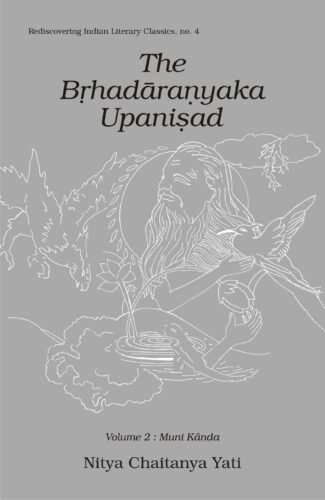
This dialectical narration of the Brhadaranyaka Upanisad will help the reader discover the ancient seers timeless insights to appreciate an integrated system of thought and experience what is real and enduring in his/her own essence.
The Brihadaranyaka Upanishad is one of the ten major Upanishads. A dialectical narration that unabashedly stands up to the rational scrutiny of the modern mind, it is directed towards both the individual aspirant caught up in the dark morass of confusion and the philosophic thinker in search of rare pearls of wisdom from humanitys treasury. Guru Nityas matchles commentary will enable the reader to discover the ancient seers timeles insights, to appreciate a fully-developed, integrated system of thought, and, most importantly, to learn to connect with what is real and enduring in his or her own essence. Schematically, the Brihadaranyaka Upanishad a brilliant discourse from the Yajur Veda is set out in three volumes, entitled: Madhu Kanda, Muni Kanda and Khila Kanda. In his planned three-volume thorough-going, meticulously analytical commentary. Guru Nitya distills the wisdom teaching of the Brihadaranyaka Upanishad, drawing on his intimate understanding of the human psyche, as well as both Eastern and Western philosophy, science, art and literature. Dwelling in turn on each of its 435 mantras, its poetic charm, myths, metaphors, images and symbols, Guru Nitya recreates and expands the Upanishadic vision of our own nature, human interaction, and the cosmos, and their relation to the unmoved essence of all. With highly useful appendices and a comprehensive index, the commentary will hold an enduring appeal for both scholars and discerning readers.

This dialectical narration of the Brhadaranyaka Upanisad will help the reader discover the ancient seers’ timeless insights to appreciate an integrated system of thought and experience what is real and enduring in his/her own essence.
The Brihadaranyaka Upanishad is one of the ten major Upanishads. A dialectical narration that unabashedly stands up to the rational scrutiny of the modern mind, it is directed towards both the individual aspirant caught up in the dark morass of confusion and the philosophic thinker in search of rare pearls of wisdom from humanity’s treasury. Guru Nitya’s matchles commentary will enable the reader to discover the ancient seer’s timeles insights, to appreciate a fully-developed, integrated system of thought, and, most importantly, to learn to connect with what is real and enduring in his or her own essence. Schematically, the Brihadaranyaka Upanishad — a brilliant discourse from the Yajur Veda — is set out in three volumes, entitled: Madhu Kanda, Muni Kanda and Khila Kanda. In his planned three-volume thorough-going, meticulously analytical commentary. Guru Nitya distills the wisdom teaching of the Brihadaranyaka Upanishad, drawing on his intimate understanding of the human psyche, as well as both Eastern and Western philosophy, science, art and literature. Dwelling in turn on each of its 435 mantras, its poetic charm, myths, metaphors, images and symbols, Guru Nitya recreates and expands the Upanishadic vision of our own nature, human interaction, and the cosmos, and their relation to the unmoved essence of all. With highly useful appendices and a comprehensive index, the commentary will hold an enduring appeal for both scholars and discerning readers.

This book offers a fresh exposition of the Buddhist theory of meaning (apohavada) against the backdrop of Indian linguistic thought and shows how this theory is positioned vis-a-vis current issues and assumptions in language. Consists a very useful glossary.
For over two millennia, language has been one of the prime concerns in nearly all philosophical systems of India: Grammar, Mimamsa, Nyaya, Vaisheshika, Jaina and Bauddha which, in turn, not only have shaped the Indian perception of vak, but also constitute the essential background to study the major concerns of language that have been taken up in the subsequent phases of philosophical-linguistic developments. Rajnish Mishras book offers a fresh, in-depth exposition of the Buddhist theory of meaning (apohavada) against this stupendous backdrop of Indian linguistic thought and also tries to show how this time-honoured theory is positioned vis-a-vis the current issues and assumptions in language. Surveying the evolution of apoha across the ages specially in its four kindred perspectives, viz, the Abhidharmika, the Sautrantika, the Yogacara and the Madhyamika schools of Buddhist philosophy, the author sets out, on its basis, a cognitive-epistemological model for literary analysis and illustrates as well the applicational aspects of this model with meticulous analysis of Wordsworths poetic masterpiece, Tintern Abbey. Based, as it is, on wide-ranging primary sources, including the Buddhist philosophical-epistemological texts in Sanskrit, the book sheds altogether new light on the Buddhist theory of meaning and, simultaneously, argues against the fallacies that have cropped up around its latter-day interpretations. A work of specific contemporary relevance to the ongoing post-structuralist debates, the book also carries a comprehensive, highly valuable cross-referential glossary of conceptual Sanskrit terms.
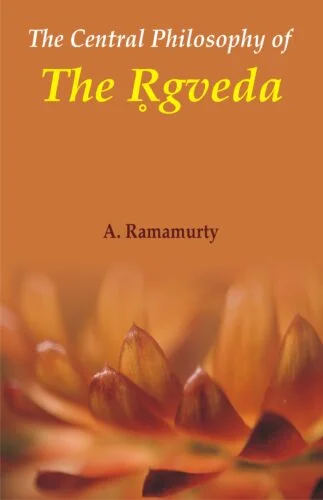
The book deals chiefly with the Rigvedic concept of divine, and the mode of divine revelation to the Vedic seers. It is a work of its kind in the field of Vedic Interpretation and offers a new perspective and direction to understanding the meaning of Vedic thought and symbolism.
Rigveda, a collection of hymns which are primarily prayers and praises addressed to various deities, is a religious/spiritual classic which influenced the formation and development of Indian way of life and culture. The concept of divine is central to it. The meaning of divine though has undergone significant changes in the long history of Hinduism depending upon its interaction with other world religions, the basic Vedic idea of divine still remains central to the Hindu concept of divine or God.
In this work we discuss mainly the meaning of divine and the mode of its revelation to the seers of the Rigveda in the state of divinely inspired devotion. This is what the Veda reveals or says about itself. To understand this claim of the Veda requires a deep understanding of the Vedic symbolism employed in communicating the meaning of divine inspiration. The seer-poets resort to symbolic use of language to communicate their vision of the divine, the birth of divine consciousness in them and its expression in the form of hymns. By closely following the text of the Rigveda, one can understand the symbolic use of certain words, and appreciate the meaning of the Veda which would otherwise be highly obscure and utterly unintelligible. Unless we understand the meaning of divine and the mode of its revelation to the Vedic seers it is difficult to understand and appreciate the meaning of the Veda or to interpret it. The Veda in its literary form comes into existence when the divinely inspired devotion is expressed in the form of prayer or hymns. When divine inspiration is offered back to the divine in the form of prayer and praise, human life finds its supreme fulfilment, and its attitude to world or nature gets transformed into one of reverence and worship.
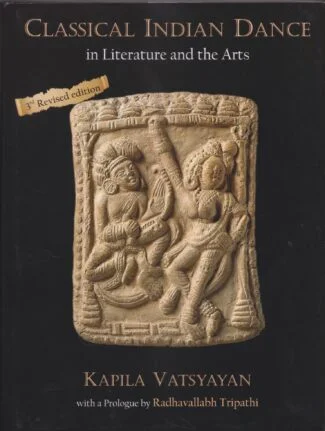
The book vividly presents, analyses and critiques the varied facets of Indian aesthetics, especially the theory and technique of classical Indian dance, while doing a penetrating study of interrelationship that dancing has with literature, sculpture and music. In doing so, the book surveys and analyses the contribution of all great Sanskrit authors, theoreticians, playwrights of ancient and classical India along with the works many Bhāṣā scholars of arts, aesthetics and literature.
This volume is the result of many years of painstaking research in a field, which had been neglected by art historians, and thus presenting an idealistic view of the whole tradition of Indian art and aesthetics. This definitive work on the inherent interrelationship of the Indian arts is a path-breaking endeavour, treading into a domain which no one had explored. For that to happen, the author has delved deep into enormous mass of literature on the subject and has also surveyed the portrayal of dance figures in ancient temples. With Dr Kapila Vatsyayan’s profound knowledge of various dance forms as a performing artist of her own standing and having studied the sculptures and artefacts minutely, the book emerges so scholarly emanating the wisdom and know-how of a persona, endowed with the unique combination of a researcher, an art historian and an aesthetician par excellence.
The book vividly presents, analyses and critiques the varied facets of Indian aesthetics, especially the theory and technique of classical Indian dance, while doing a penetrating study of interrelationship that dancing has with literature, sculpture and music. In doing so, it surveys and analyses the contribution of great Sanskrit authors, theoreticians, playwrights of ancient and classical India such as Bharata, Bhāsa, Kālidāsa, Śūdraka, Bhavabhūti, Abhinavagupta, Jayadeva and many more along with numerous Bhāṣā scholars of arts, aesthetics and literature, covering each and every nook and corner of the Indian subcontinent.
This highly scholarly work should invoke keen enthusiasm among Sanskritists, art historians, dancers and students of varied art forms alike, and should pave the way for ongoing researches on all the topics covered within its scope.
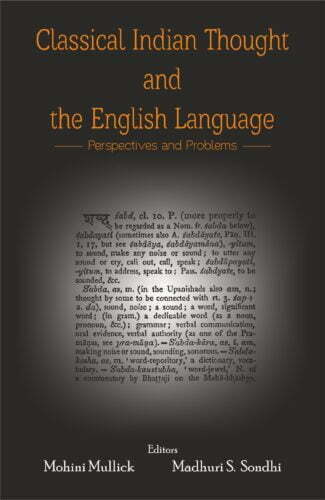
This book brings into focus the problems associated with conveying the central concepts and categories relating to some key areas of Indian classical thought through the well-established lexicons available in English, the language of power. It covers thus Epistemology, Ontology, Aesthetics, Moral Philosophy, Philosophy of Language, Religion and Logic, Political Theory, History, and Culture Theory from India and abroad.
This book is based on the proceedings of a Workshop held in 2011 on Rendering of the Categories of Classical Indian Thought in the English Language: Perspectives and Problems.
Although scientific texts appear to have successfully solved the problem by standardizing technical terms for all languages of instruction and communication, the problem of translation becomes acute when dealing with vocabularies of long standing belonging to ancient cultures, as is the case in India.
More urgently, we know that the thought worlds of ancient and medieval India are still very much alive and with us. Thus to even begin to understand contemporary India and its dilemmas, it is essential to come to grips with the foundational concerns, wisdom and follies of a civilization that has refused to die. What we find, however, is that when it comes to the understanding of our own thought traditions, their rendering into the English language in the colonial (and post-colonial) period, has only served to obscure the great cultural divide between the history of Western thought and our own.
The workshop thus aimed at bringing into focus the problems associated with conveying the central concepts and categories relating to some key areas of Indian classical thought through the well-established lexicons available in English, the language of power.
The multidisciplinary gathering included not only philosophers from the fields of Epistemology, Ontology, Aesthetics, Moral Philosophy, Philosophy of Language, Religion and Logic, but also specialists in the fields of Political Theory, History, and Culture Theory from India and abroad.

This work highlights the Dharmashastra essentials by listing the major authors with their biographies, titles and their dates of composition, published editions and commentaries. It shows how Dharmashastra works have influenced the Indian way of life.
Dharmashastra is not just a corpus of scriptural texts. It is rather a genre, in its own right, of writings comprising prescriptive codes of righteous conduct in different spheres: whether familial, societal, ritualistic, legal, or even political. For the first time, this book offers a quintessential view of the Dharmashastra (Smriti) literature. Which today, along with its digests and commentaries, looks like a vast reservoir of literary works that have been accumulating over the centuries since their legendary beginnings with Manu. Designed primarily for reference, this Companion is styled and structured to bring forth the Dharmashastra-essentials in the quickest time. Listed here, alphabetically, are the major authors with their biographical sketches. And, these besides, the titles, together with descriptive details of their thematic content, dates/probable dates of their composition, published editions and commentaries their upon. Also included here are as many as 12 appendices which, in their totality, embody Dharmashastra-based information on geography, flora and fauna, mixed castes/tribes, neo-Smriti schools, and the kind of relation Smriti literature has with the Mahabharata, Puranas, and Tantra, among other aspects. Professor Banerjis book not only tries to show how Dharmashastra works are representative of the ancient/medieval political, social and cultural milieus, but is also a painstaking attempt to gauge their influence in conditioning the Indian way of life and psyche. Supported by an extensive glossarial index of Smriti literature, it is indisputably a valued companion to the Dharmashastra-specialists, Indologists and the scholars of ancient/medieval Indian sociology.
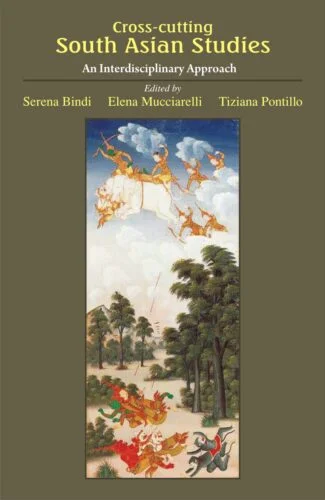
This volume deals with different issues related to religious practices and institutions in South Asia. It further seeks to substantiate the well-known opposition between the so-called orthodox sovereignty and the heterodox one, of which the so-called vratya-power seems to be a prime example.
This volume, Cross-cutting South Asian Studies: An Interdisciplinary Approach focuses on two themes that are central to Indological studies: religious practices and heterodox sovereignty.
The first part of this volume The Indian Ocean of Religious Practices: Past and Present deals with different issues related to religious practices and institutions in South Asia. These contributions share a similar theoretical perspective on religion: they all highlight, in various ways and through different disciplinary approaches, how, in order to fully understand religious practices and their inherent dynamics, it is essential to consider the power relations that continually imbue and shape them.
The second part Kings, Priests and Prominent Roles Interpreted through the Visual, Literary, Speculative, and Technical Indian Arts seeks to substantiate the well-known opposition between the so-called orthodox sovereignty and the heterodox one, of which the so-called vratya-power seems to be a prime example. Therefore, the target of the relevant contributions consists in focusing on different contexts where the king or chieftain, or merely the patron of the sacrifice, gains his temporary pre-eminence in an agonistic way which includes an important non-permanent ascetic dimension.

Darsanamala written in Sanskrit is one of the major works of Narayana Guru. Consisting of 100 verses divided into 10 chapters of 10 verses each, each chapter gives a different vision, complete in itself. The author here adopts the system of looking at non-dual, Ultimate Reality or Brahman from ten different points and a real seeker can intuitively perceive the non-dual Brahman within himself, he being inalienable from it.
Darsanamala written in Sanskrit is one of the major works of Narayana Guru. Consisting of 100 verses divided into 10 chapters of 10 verses each, each chapter gives a different vision, complete in itself. The author here adopts the system of looking at non-dual, Ultimate Reality or Brahman from ten different points and a real seeker can intuitively perceive the non-dual Brahman within himself, he being inalienable from it.
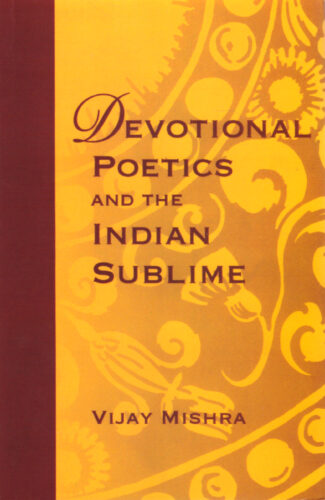
Studying European theories of the sublime particularly against contemporary critical uses of the term, the study maintains that the Brahman is one of the most fully developed sublimes. It analyses the relationship of a devotee, with his God when the latter is incapable of representation.
The last two decades of the twentieth century have been marked by an immense revival of interest in the sublime, yet past studies have used Western texts as their archives. This book dramatically shifts the focus by examining a major instance of an Indian sublime: the Brahman. Mishra examines European theories of the sublime, reads them off against contemporary critical uses of the term (notably by Lyotard and Paul de Man) and proposes that the Hindu Brahman constitutes an instance of one of the most fully developed of all comprehensive theory of both the Indian sublime and Indian devotional verse. The book offers a highly original interpretation of one fundamental problem in Indian cultural history: how does a devotee establish a relationship with God (Brahman) when God is ultimately incapable of representation? Mishra brilliantly exposes this problem by introducing the theme of the sublime and shows how the problem has been confronted across a range of central Hindu texts covering a large panorama of historical time and several Indic languages.
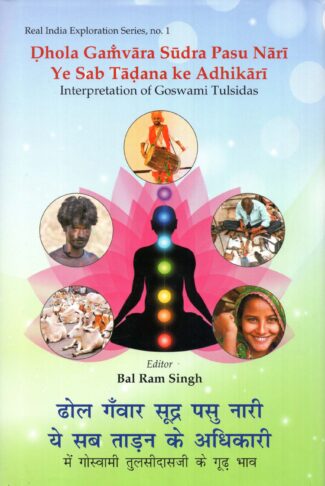
This book presents a proper meaning of the Ramcharitmanas chaupai, Dhola gamvara sudra pasu nari , ye sab tadana ke adhikari using the actual meaning of the word, tadana, in Avadhi language, and by delving into the deep philosophical references of the Pancabhutas, ether, air, fire, water, and earth of the Samkhya and Vaishesika darshanas, as intended by Goswami Tulsidas.
This book presents a proper meaning of the Ramcharitmanas chaupai, Dhola gamvara sudra pasu nari , ye sab tadana ke adhikari using the actual meaning of the word, tadana, in Avadhi language, and by delving into the deep philosophical references of the Pancabhutas, ether, air, fire, water, and earth of the Samkhya and Vaishesika darshanas, as intended by Goswami Tulsidas.
| There are no products |